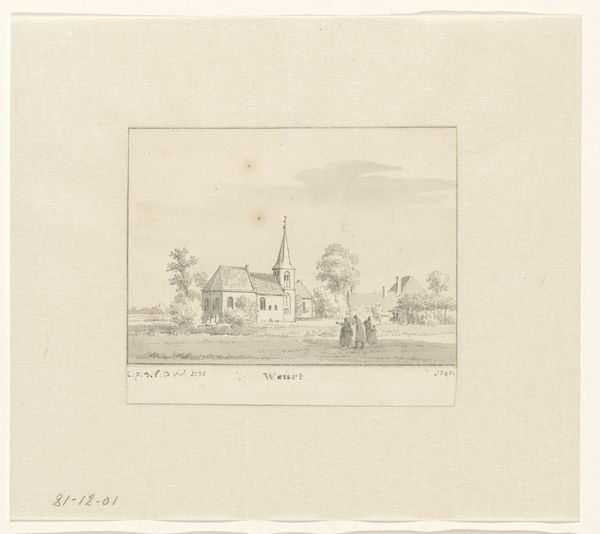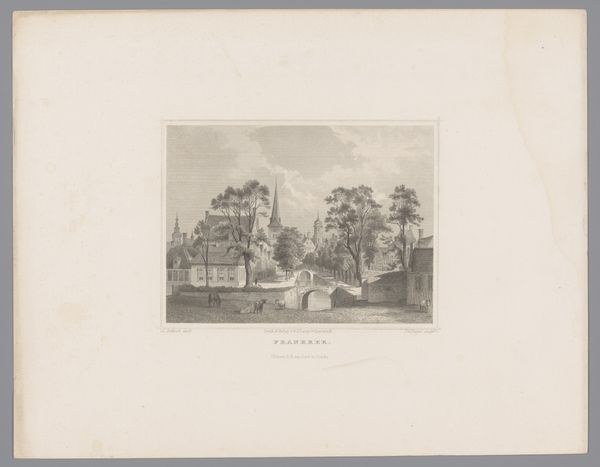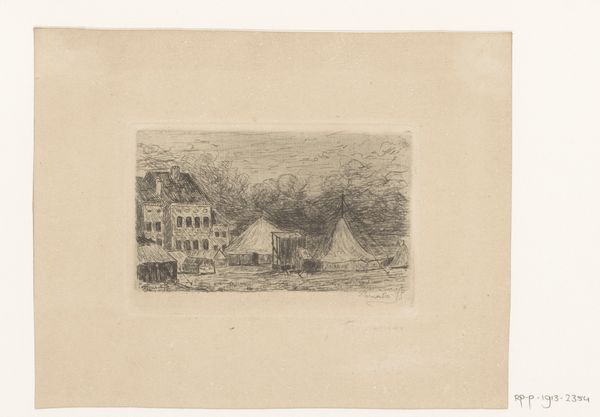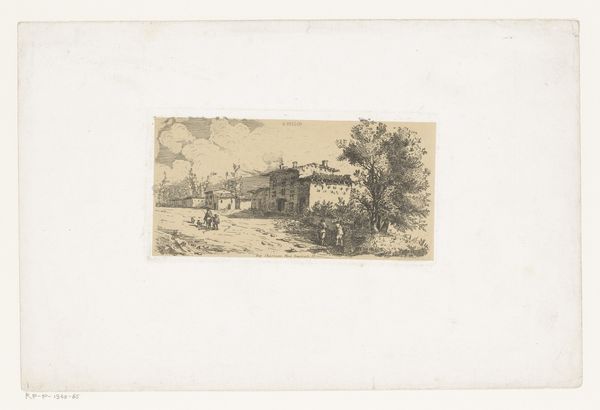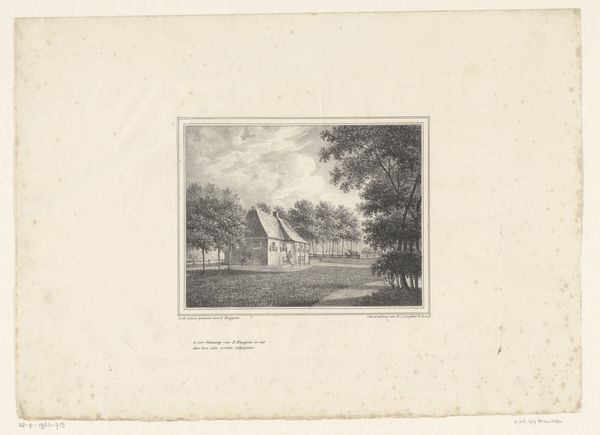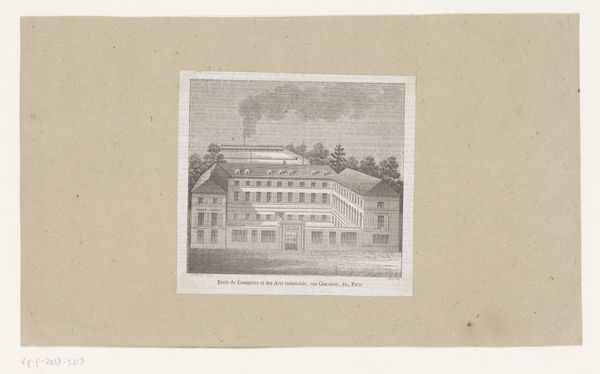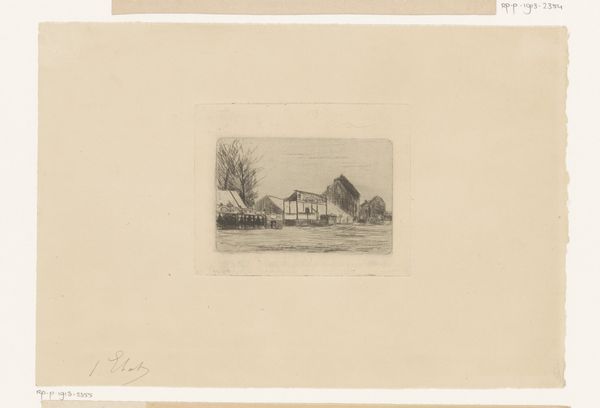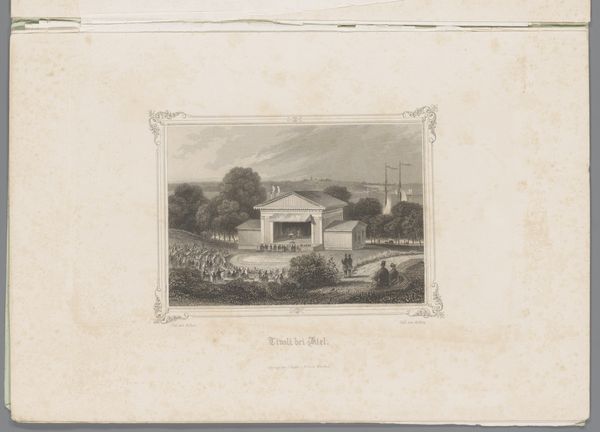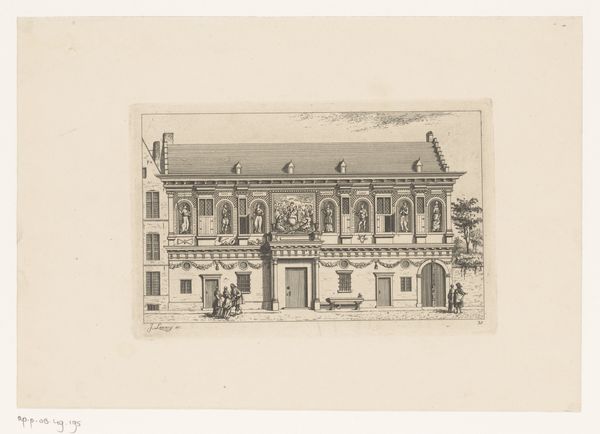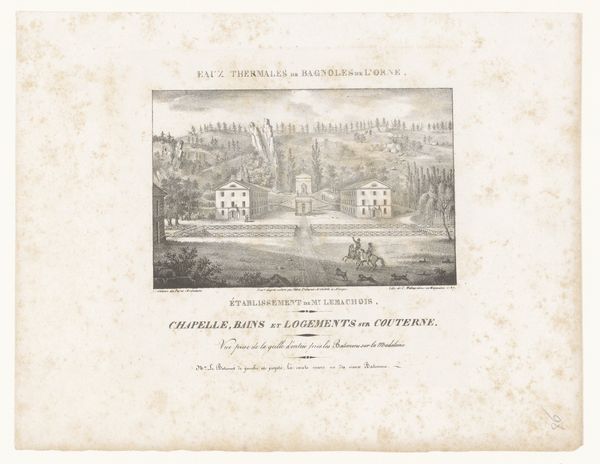
drawing, etching, paper, pencil
#
drawing
#
neoclacissism
#
aged paper
#
light pencil work
#
etching
#
old engraving style
#
landscape
#
etching
#
paper
#
personal sketchbook
#
geometric
#
pencil
#
sketchbook drawing
Dimensions: height 263 mm, width 424 mm
Copyright: Rijks Museum: Open Domain
Editor: So, here we have Abraham van Strij's "Ontwerp voor behangsel of schoorsteen," dating somewhere between 1763 and 1826. It's a drawing and etching, mostly in pencil, on paper. It's delicate, almost a whisper of a landscape. What catches your eye when you look at it? Curator: Ah, a whisper, yes, precisely! It reminds me of uncovering a long-lost memory. The light pencil work, the aged paper…it speaks of time, doesn’t it? It’s more than just a landscape; it's a feeling of a landscape. You see how the artist uses these delicate lines to create a sense of depth, but also of distance. Makes you wonder about the Baarland in van Strij’s memory versus reality. Editor: That's interesting... it feels like peering into someone’s personal sketchbook, and the etching gives it this wonderfully formal edge too, though. Almost like a very precise dream. Do you think the combination of informality and classicism relates to Neoclassicism? Curator: Absolutely. You’ve hit upon something crucial there. Neoclassicism was about order, clarity, a return to the ideals of antiquity, but here, Van Strij tempers that with an intimacy, a sketch-like quality. He's playing with those boundaries, offering us something both grand and personal. He gives himself some wiggle room from that rigidity, eh? I love that! Editor: That contrast really does give it its unique charm! The sketch feels so modern in a way, despite the old engraving style. Curator: Exactly! Isn’t it amazing how art can transcend time like that? And see, talking it through always illuminates something new. I’m so glad we took a peek! Editor: Me too! It's made me see it in a whole new light. Thanks!
Comments
No comments
Be the first to comment and join the conversation on the ultimate creative platform.
